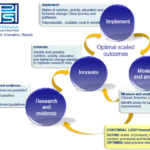Building a more productive Australia
Patrick Callioni continues to explore issues related to productivity and the future of Australian business.
Shortly after I wrote my last blog on productivity, the Commonwealth, Victorian and New South Wales governments announced cuts in some government agencies, allegedly needed to meet efficiency or budget targets.
The cuts, of course, would be in jobs at the lower end of the hierarchy and in significant numbers, as high as 500. Would you like to know why when public service chiefs cut jobs they always do it from the bottom? Here is why.
First, because this way they do not have to sack anyone they actually know, people in senior and middle management. Secondly, because people in senior and middle management know how to shield themselves from being let go. Thirdly – and perhaps most importantly – because they wish to embarrass the government by making the number of jobs lost as large as possible. Fourthly, they do this because they cut jobs first and – if they do it at all – they redesign business processes afterwards. In my experience, they hardly ever do it even then.
Now, would you like to know what they should be doing instead? First, they should know that business processes in government are made inefficient by having too many layers of management. Do you know that often executive level staff have only three to five staff to supervise and senior executive staff often have branches of fewer than fifteen people? This is wasteful and also creates unsatisfying and unrewarding jobs for managers – and gives new managers little opportunity to learn how to manage and lead.
My thirty years of experience tell me that a director (a section head) should have between 8 and 10 staff and a branch manager should have between 20 and 30 staff. In organisations I have designed along those lines, staff satisfaction rises automatically and with it will rise productivity – retention rates also increase, while absenteeism falls.
Secondly, those chiefs should know that first you redesign business processes to make them effective and efficient and then and only then if it is necessary, do you cut jobs that are no longer required or that have been re-designed to the extent that a different skill profile is required.
Thirdly, they should know that for every senior executive they get rid of they will save in the region of $500,000 per year – in direct and indirect costs – whereas for every junior staff member who goes, the saving is likely to be around a quarter of that. A corollary of cutting from the bottom is that the proportion of managers to doers continues to increase, to the detriment of program and service delivery. Also, inevitably, productivity falls, because unit costs will rise as a result of the higher average salary in the agency.
If, instead, you cut from the top, the processes of government would become less cluttered and more efficient; the public would receive better service and better program delivery; the taxpayer would benefit from a more efficient public service; and many fewer jobs would be lost.
So, I say to those who run governments in Australia: don’t be fooled by the self-serving advice provided to you on these matters by those whom you have appointed to run government departments and agencies. Apply the logic of the arguments I have set out for you here today and work it out for yourself; then, instruct your agency chief to follow that logic – no excuses or delays accepted.
I know, again from experience, that with support from the top substantial cuts in public service head offices can be made to happen within four to six weeks, without upsetting the unions or the staff. I once cut middle and senior management in a government department in Canberra by 15% in five weeks – aided by two part-time staff – and used the savings to open a new network of service delivery centres to provide services to ageing clients close to their homes, in their communities.
So you see, Minister or would be Minister, there is no need to be courageous to make a difference for the better.
Patrick Callioni is a former senior public servant, with the Queensland and Australian Governments, and is now the Managing Director of consulting company, Enterprise Intelligence Pty Ltd, which specialises in helping business to do business with government and vice-versa.
Patrick Callioni is a former senior public servant, with the Queensland and Australian Governments, and is now the Managing Director of consulting company, Enterprise Intelligence Pty Ltd, which specialises in helping business to do business with government and vice-versa. www.enterpriseintelligence.net.au His books Compliance Regulation and Financial Services & Waves of Change: Managing Global Trends in the Financial Services Industry are available at Amazon.





